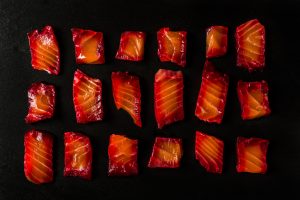Herbs are usually the last ingredients added to the pot, and the first one omitted from a recipe, particularly with home cooks. But the fragrant flavours from herbs are often where the magic happens, where the dish becomes more than just the sum of its parts.
The general misuse of herbs helps make their inclusion in a dish something that sets apart a restaurant’s version of a meal, from one cooked at home. The rosemary-studded leg of lamb, or the thyme-flecked béchamel, are completely different dishes compared to those that lack the lacing of fresh green herbs.
In the professional kitchen, our arsenal of ingredients is what empowers us to create knockout dishes that leave a lasting memory of flavour. The restaurant is where the benchmarks are often set, and the accentuation of flavour is something often strived for. Infusions and tinctures are a key practice not only for preserving fresh ingredients, trapping their flavours in oils, milks, creams and liquors. That’s before we’ve had the bartenders hassle the kitchen for various syrups to use in cocktails, suspending the essence of mint or lemon verbena in a caramelised liquid.
The importance of herbs is never been more prevalent. With the authentic flavours of Mexico being explored with wild abandon – Rene Redzepi and the crew from Noma are currently doing a pop-up in Tulum – chefs are playing with a whole range of indigenous ingredients and food preparation techniques.
Between the tacotrend, and the riding wave of south east Asian cuisines, fresh coriander is getting an enormous amount of use, and becoming one of the most versatile herbs in the lineup. A good pico de gallo is a ghost without it, as is a fragrant Vietnamese pho broth, which restaurants like Hackney’s Pidgin have used been using as a reduction with beef dishes.
In the modernist realm, where meticulous cooking and extreme precision is the norm, micro herbs are tweezered in left, right and centre. This pretty finishing touch is not only arming you guys with cool aesthetics, finalising the grand architecture of a dish, but they also pack a concentrated burst of fragrance, and often equip you with a herbs flavour in its cleanest, brightest form.
The pollen of mature herbs are also being harvested and utilised in kitchens, with fennel and dill pollen being the most commonly used. This hugely concentrated product can be used in brines, but works particularly well in dry cure processes and even as a mild seasoning to finish dishes. Fennel pollen, with it’s gutsy, argumentative flavour stands tall against rich, dark chocolate, taking deserts in a dynamic savoury direction, but is also being used in certain areas of cheese production too.
Although the cornerstone of the professional kitchen, herbs are an area of inventory that can easily be enhanced.


